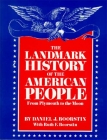Day 619 of 1000
This is the fourth in a series of articles about why we used Sonlight Curricula in our homeschool. Here is a page that holds an introduction to the series and links to the other posts in the series. We bought core packages for what would be third through tenth grades in a traditional school. Kelly used the program from fifth through tenth grade. Christian used the program from third through eighth grade. This series mostly describes what we did for all the subject areas except math, music, and art. I have already written pretty extensively on this blog about what we did for math and plan to do a future series on our art art program. We bought most, but not all of our core materials from Sonlight and followed their curriculum guides with a fair amount of rigor. Like most other homeschoolers, we deviated in minor ways where we saw fit.
[Previous post]
[Next post]
I have written what I have to write about the Sonlight history program in other places so this will be a brief overview of how it served us and a link or two to the posts that go into more detail. In a nutshell, there were some things we absolutely loved about how Sonlight handles history, but there was one part of the program-the Joy Hakim series for US History–we found totally unsuitable for our needs both in terms of the quality and depth of the history coverage. We made the mistake of buying the stuff that did not work for us before we sufficiently checked it out because our previous experience with the Sonlight History curricula had been so stellar.
 In a nutshell, the things we really liked about the History program is that the Literature and History books and study guides are so will coordinated with each other. As mentioned above, we started back into homeschool when one of our children entered third grade and the other entered fifth grade. The curriculum we picked for the third grader featured The Land Mark History of the American People Volume I. I started reading it aloud to Christian, our third grader, but after the first chapter, it was so excellent, we started over so we could include our fifth grader in the reading even though she was working her way through the equivalent of what I think is now called the Eastern Hemisphere.
In a nutshell, the things we really liked about the History program is that the Literature and History books and study guides are so will coordinated with each other. As mentioned above, we started back into homeschool when one of our children entered third grade and the other entered fifth grade. The curriculum we picked for the third grader featured The Land Mark History of the American People Volume I. I started reading it aloud to Christian, our third grader, but after the first chapter, it was so excellent, we started over so we could include our fifth grader in the reading even though she was working her way through the equivalent of what I think is now called the Eastern Hemisphere.
So in the final analysis, we highly recommend the first two-year pass through US History called Introduction to American History I and II. We loved the wonderful one year pass through the Eastern Hemisphere and the two year survey of World History I and II. We strongly recommend skipping the one year American History in Depth. We used the provided Literature books, but found something to replace the Joy Hakim books with what we believe was a much better written, more in-depth, interesting, and honest account of American History. The adjustments were required to allow us to better prepare our children to study History in college. We write more about our thinking on this material here, here, here and here.

Thanks for the blog posts! It is nice to get a parent’s perspective.
Mindy
Thanks Mindy, it is great to know some of this stuff I write is useful!
Hi, Ken. My oldest will probably be studying U.S. History during the 2016-17 school year, his 9th grade year. While using a different spine, was the Sonlight IG still helpful in providing lesson plans? If not, did you use any kind of guide? I have trouble knowing what to assign in terms of projects and writing.
The Sonlight Guide was excellent, still for providing lesson plans. That was mostly because we still used all the really excellent literature that went along with U.S. History for that year. For the actually (non-literature) History, we based it around A Patriot’s History of the United States and the REA CLEP study guide. Both of them were really excellent and we were pleased with the result–Kelly was able to pass the CLEP tests for two semesters of college credit. You can read about that here, here and here.